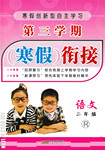题目内容
Since the popularity of smart phones, people spend lots of time on their phones, either messaging other people,
______news, or playing games.___________I think cell phones have made life more_________, I don’t think spending a lot of time on cell phones is a good idea.
Firstly, spending too much time on cell phones may__________cancer. Scientific studies have__________that low levels of radiation(辐射) are given off from the batteries(电池) of cell phones. Not only that, but phones are constantly using microwaves to send and _________information. Since many people use their cell phones near their heads, long time exposure(暴露) could eventually lead to some very___________and unhealthy effects.
Secondly, when people spend too much time on their cell phones, they__________on the things going on around them. This has been proven over and over again by___________who use their phones while in their cars. This has been such a major cause of car___________, because drivers are too distracted(分心) by their phones to__________the road, that most states in the U.S. have banned(禁止) the __________of cell phones while driving. There are also other cases showing how using cell phones can_________people to miss out on the things around them. For example, I went hiking with a friend a few weeks ago. She was so__________to her cell phones the whole time that she missed out on all the__________things we saw on the mountains, and didn’t get a___________to experience the same awe(敬畏) of nature as I was able to experience.
Lastly, spending too much time on cell phones makes people forget how to have normal conversations._______, when people use text messaging, they use a form of shorthand known as “Netspeak” to________on the size of messages and make typing them on small keyboards fast and easy.________this, many people forget how to spell and use grammar__________.
1.A. reading B. learning C. spreading D. reporting
2.A. Since B. Because C. Unless D. While
3.A. interesting B. meaningful C. convenient D. enjoyable
4.A. add to B. result from C. turn to D. lead to
5.A. raised B. proven C. reviewed D. examined
6.A. seek B. store C. receive D. collect
7.A. powerful B. harmful C. important D. beneficial
8.A. break in B. fall back C. miss out D. catch up
9.A. drivers B. visitors C. passengers D. players
10.A. accidents B. trades C. crimes D. losses
11.A. pull out into B. pay attention to C. get across D. go along
12.A. use B. call C. answer D. message
13.A. command B. force C. allow D. cause
14.A. accounted B. attracted C. attached D. affected
15.A. terrible B. strange C. beautiful D. funny
16.A. moment B. mind C. way D. chance
17.A. Therefore B. Besides C. However D. Instead
18.A. count B. work C. save D. mark
19.A. In case of B. According to C. For fear of D. As a result of
20.A. correctly B. carefully C. regularly D. normally
 寒假创新型自主学习第三学期寒假衔接系列答案
寒假创新型自主学习第三学期寒假衔接系列答案-She ______ a job from city to city-you see,she is graduating in June.( )
| A. | hunts for | B. | is to hunt for | ||
| C. | has hunted for | D. | has been hunting for |
All week I drove by that place hoping to see Joyce and give her more.One week later,I was the first in (33)Dat the red light and as I(34)A the light I smiled.There was Joyce.I asked her what her (35)Cwere.She said that one of her relatives lived in Texas and (36)Da few rental houses,and she had agreed to let them stay in one until they got (37)B."I have a little something to help you(38)Athere,"and I gave her a 20-dollar bill."We all need a little help every now and then,don't we?"We both smiled and nodded in (39)A.
Who knows if I'll ever see her again?But I know at that moment she smiled and she knew that things really were going to get better for her.And seeing her smile and the hope in her eyes is what I needed to (40)Cmy trouble in life.
| 21.A.pride | B.satisfaction | C.sadness | D.puzzle |
| 22.A.told | B.read | C.wrote | D.showed |
| 23.A.luckily | B.generally | C.slowly | D.automatically |
| 24.A.wallet | B.home | C.office | D.car |
| 25.A.door | B.window | C.curtains | D.sleeves |
| 26.A.explained | B.argued | C.responded | D.repeated |
| 27.A.put away | B.put up | C.put out | D.put aside |
| 28.A.folded | B.raised | C.pressed | D.shook |
| 29.A.less | B.more | C.fewer | D.most |
| 30.A.raised | B.gave | C.reac hed | D.cupped |
| 31.A.accepted | B.spread | C.collected | D.threw |
| 32.A.got | B.lost | C.sold | D.missed |
| 33.A.fact | B.time | C.turn | D.line |
| 34.A.approached | B.left | C.discovered | D.broke |
| 35.A.beliefs | B.dreams | C.plans | D.projects |
| 36.A.built | B.chose | C.sold | D.owned |
| 37.A.truth | B.jobs | C.benefits | D.support |
| 38.A.get | B.escape | C.pass | D.survive |
| 39.A.agreement | B.doubt | C.demand | D.surprise |
| 40.A.run into | B.hold back | C.get through | D.put off |
| A. | In case | B. | Now that | C. | Even if | D. | As though |

